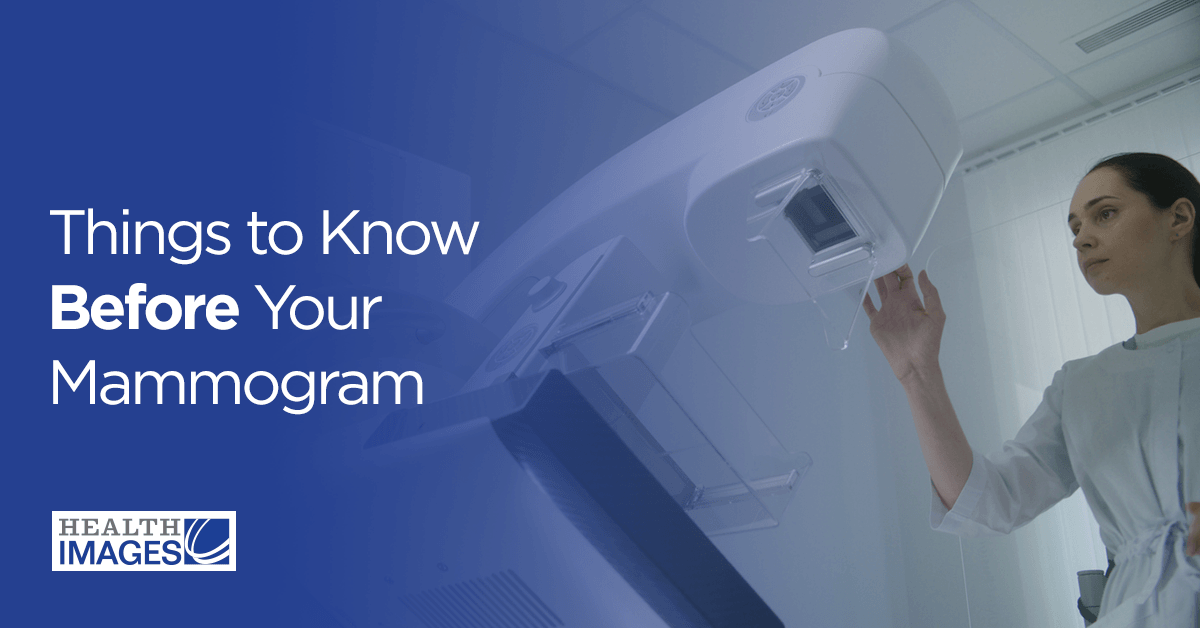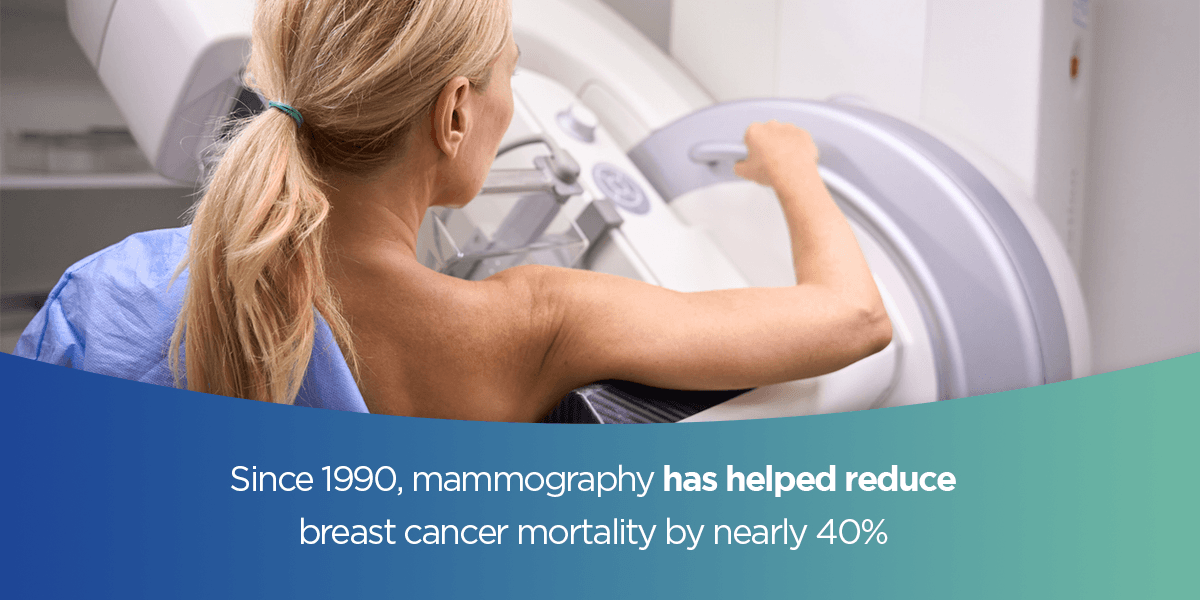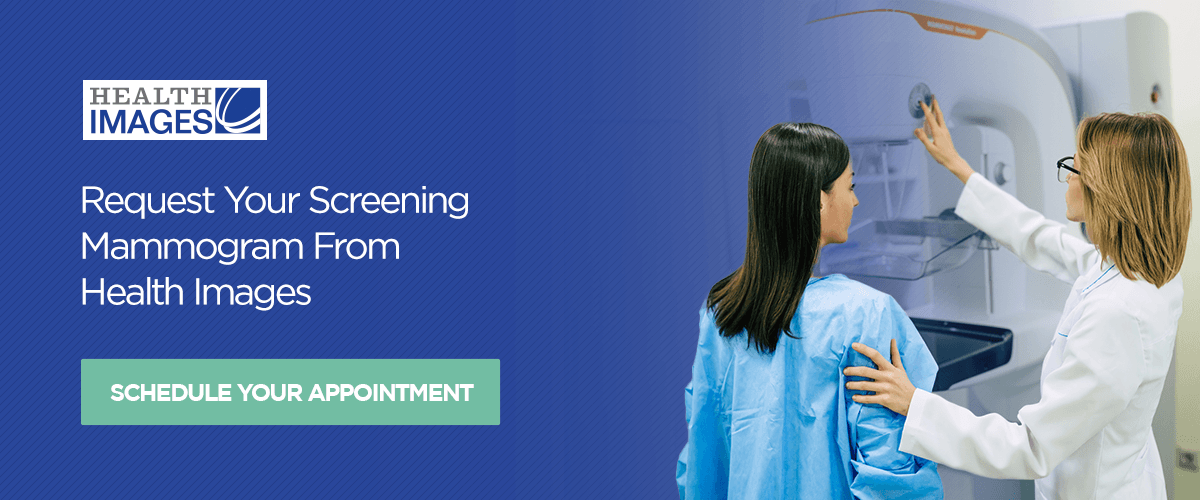Things to Know Before Your Mammogram

Are you unsure of what to expect at your first mammogram? Use this guide to learn who should get mammograms, how to prepare for them and what happens during the procedure. There are two types of mammograms:
- Screening mammogram: This kind of mammogram is for women who don’t have any symptoms of breast cancer. It’s often conducted annually for women over 40 to ensure any potential cancer is caught early.
- Diagnostic mammogram: This type of mammogram is for women who are having symptoms of breast cancer. If your screening shows something abnormal, your doctor may recommend a diagnostic test as well.
This guide covers everything you need to know for a peaceful, stress-free mammogram experience.
Who Should Get a Mammogram?
You may have heard the phrase, “Mammograms save lives.” According to the American Cancer Society, approximately 310,720 new cases of breast cancer were diagnosed in 2024. Breast cancer is the second leading cause of cancer death for women, after lung cancer.
The American College of Radiology reports that one in six breast cancers occurs in women in their 40s. Since 1990, mammography has helped reduce breast cancer mortality by nearly 40%. When you get a mammogram regularly, you significantly increase your chances of catching cancer early and being part of that 40%.
What Happens During a Mammogram?
During your mammogram, you’ll have to undress from the waist up. The technologist helping you is always a woman, and she’ll give you a hospital gown to wear while you wait for the procedure. The actual procedure will be short, lasting only a few seconds per image. Most mammograms need two images for each breast, although you may need to retake an image if it’s unclear.
During the procedure, your breast will be pressed between two plates and scanned. Some women take pain medication before their mammogram to prevent discomfort. If you’re extremely uncomfortable, let your technologist know and she can adjust the pressure of the plates.
You’ll be standing during the procedure, so be sure to wear comfortable shoes. Breathe slowly and evenly, and try not to move while the scan is being done. You may be asked to hold your breath to ensure the image is as still and clear as possible.
How to Prepare for Your Mammogram
Before your mammogram, there are some things you should and shouldn’t do. Here are some tips to help you prepare so your procedure goes smoothly and quickly.
Avoid Using Deodorant
Deodorant can interfere with a clear scan and make it look like something is wrong when your breast tissue is normal. Avoid wearing deodorant, lotion or perfume anywhere on your chest, neck or armpits on the day of your mammogram.
Wear a Two-Piece Outfit
To make changing easier, wear a two-piece outfit. When it’s time for your scan, you’ll need to remove your clothing from the waist up. You should also wear comfortable shoes since you’ll be standing for the duration of the exam. You’ll need to move and shift positions, so avoid high heels that could negatively impact your balance.
Leave Jewelry Behind
Avoid wearing necklaces or other jewelry near your chest area, as this can cause issues with the exam. Even a short necklace can impact the results of the scan. If you wear earrings or rings, the technologist will also ask you to remove them before the scan.
Eat and Drink Normally
You can eat and drink normally before your mammogram. However, it’s recommended to avoid caffeine and chocolate for a few days before your exam, since these foods can increase breast tenderness and make the scan more uncomfortable. You can also take all your medications as usual.
Bring ID and Insurance
Make sure you have your ID and insurance information before your appointment. Check your coverage to confirm that your insurance covers the type of mammogram you’re getting. If it doesn’t, you may be able to switch to another type of mammogram.
Update Your Technologist
Before your exam, talk to the technologist about any changes or concerns with your breasts. They may want to switch you to another type of mammogram depending on your symptoms.
What Are the Risks and Limitations of Mammograms?
Before getting a mammogram, understand that the procedure exposes you to low-dose radiation. If you’re pregnant, let your doctor know before scheduling a mammogram.
Although screening does help catch breast cancer early, screening mammography can’t detect all cancers — and not all cancers found by mammography can be cured. However, getting a mammogram can significantly decrease your risk of dying from advanced breast cancer.
When to Schedule a Mammogram
If you’re experiencing symptoms that might be related to breast cancer — like a lump in one of your breasts — you should schedule a mammogram immediately. Once women reach the age of 45, it’s a good idea to schedule an annual mammogram.
The best time of the month for scheduling a mammogram is the week after your period when your breasts are not tender. Breast tissue is also looser during this part of your cycle, making it easier to see if there are any abnormalities in your breast tissue.
Before your mammogram, you should gather mammogram images and biopsy results from any prior visits to show the specialist. It’s best to find a certified mammogram facility since it can perform additional imaging or biopsies if your mammogram is unclear.
Why Trust Us?
At Health Images, we’re privileged to serve women with mammograms and other imaging services. Our office provides a warm atmosphere and the latest in imaging technology. We keep our turnaround rate incredibly fast so you can be seen and get the imaging results you need as quickly as possible.
Interested in hearing from women who have experienced mammogram screenings at our locations? Here’s a testimonial from a North Denver patient who visited Health Images:
“I have been in several times over the last year and every time have been treated with kindness, helpfulness, and respect. I really appreciate all who work at the Thornton facility. Thank you!”
Here’s more from a patient in South Denver:
“The staff at Health Images was great. From our check in phone call, to the front desk to everyone behind the door. They were all so extremely nice and professional.”
Getting a mammogram doesn’t need to be painful or stressful. When you go to the right imaging center, your experience can be quick and stress-free.
Request Your Screening Mammogram From Health Images
Is it time for your annual mammogram? For women over 40, getting a mammogram every year can help you identify breast cancer in its early stages and increase your chances of recovery. These procedures are short, noninvasive and often covered by insurance.
If you’re unsure whether you should get a mammogram, talk to your doctor. They can refer you for a mammogram if you have a risk for cancer or are experiencing symptoms that could be cancer. They can also refer you for an annual mammogram that provides peace of mind.
Request your screening mammogram from Health Images today!




